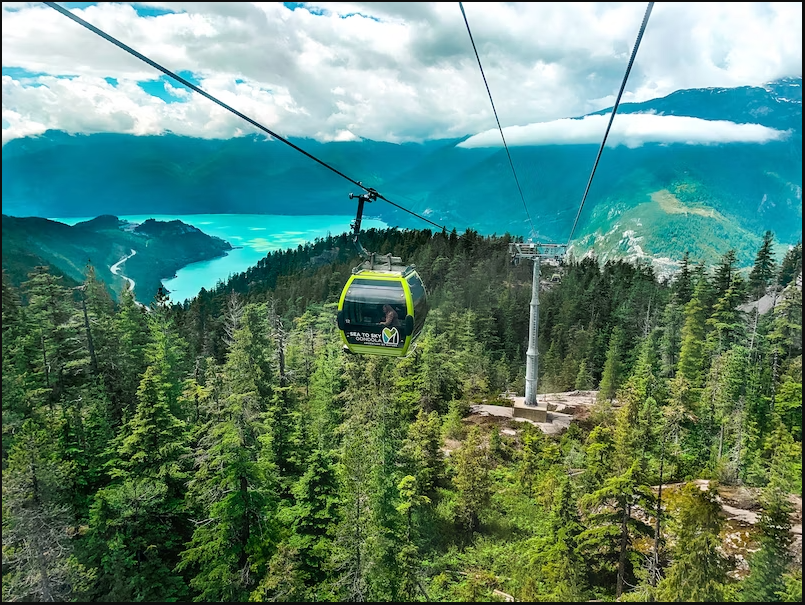The field of ropeway engineering holds immense potential for revolutionizing transportation solutions, and the Philippines is at the forefront of embracing this innovative technology. As the country grapples with traffic congestion and limited infrastructure, ropeway systems offer a promising alternative for efficient and sustainable transportation. This blog post delves into the expertise of ropeway engineering professionals in the Philippines, exploring their role in designing, constructing, and maintaining ropeway systems that are transforming transportation across the archipelago.
Understanding Ropeway Engineering
Ropeway engineering encompasses a range of transportation systems, including cable cars, gondolas, and aerial tramways. These systems utilize cables and support structures to transport passengers and cargo in an efficient and environmentally friendly manner. Ropeway systems have numerous advantages, such as reducing congestion, providing accessibility to remote areas, and minimizing environmental impact. By leveraging these benefits, the Philippines can address its unique transportation challenges effectively.
Ropeway Engineering in the Philippines
The Philippines faces significant transportation challenges, particularly in urban centers and remote areas. Traffic congestion is a persistent problem, leading to lost productivity, increased pollution, and compromised quality of life. Moreover, many remote areas lack adequate infrastructure, making them inaccessible to traditional modes of transportation. Ropeway systems present a viable solution to these issues, offering reliable and efficient transportation options.
In the Philippines, ropeway engineering experts play a pivotal role in transforming transportation infrastructure. These professionals specialize in designing, constructing, and maintaining ropeway systems tailored to the unique needs of the country. By utilizing their expertise, they contribute to improved connectivity, enhanced tourism, and economic growth.
Expertise of Ropeway Engineering Professionals in the Philippines
Education and Training
Ropeway engineering professionals in the Philippines undergo comprehensive education and training to equip themselves with the necessary skills and knowledge. Several academic programs and institutions in the country offer specialized courses in ropeway engineering, ensuring that professionals receive a strong foundation in this field. Through rigorous training, they gain expertise in designing safe and efficient ropeway systems.
Technical Knowledge and Experience
Ropeway engineering professionals in the Philippines possess extensive technical knowledge and experience in the field. They are adept at conducting feasibility studies, route planning, and environmental impact assessments to ensure the seamless integration of ropeway systems into existing infrastructure. Their expertise extends to optimizing system efficiency, ensuring passenger safety, and addressing maintenance and operational requirements.
Compliance with International Standards
Adherence to international safety and quality standards is paramount in ropeway engineering. Professionals in the Philippines are well-versed in these standards, and their designs and operations comply with internationally recognized best practices. Through certifications and affiliations with renowned international ropeway engineering organizations, these experts continuously update their knowledge and skills, keeping abreast of the latest industry developments.
Innovative Ropeway Projects in the Philippines
The Philippines has witnessed the successful implementation of various ropeway projects that have had a transformative impact on transportation connectivity, tourism, and local economies. From urban centers to scenic tourist destinations and remote areas, these projects have proven the efficacy of ropeway systems.
One notable example is the urban cable car system in Metro Manila, which has significantly alleviated traffic congestion in highly congested areas. This project demonstrates the integration of ropeway systems into existing transportation infrastructure, providing commuters with efficient and reliable alternatives.
In tourist destinations like Baguio City and Davao City, gondolas and aerial tramways have been instrumental in enhancing accessibility to scenic spots, boosting tourism, and stimulating economic growth. These ropeway systems not only provide breathtaking views but also offer convenient transportation options for visitors and locals alike.
Overcoming Challenges and Future Prospects
Despite the progress in ropeway engineering, challenges remain. Public perception, regulatory frameworks, and securing adequate funding are areas that need attention to further promote the adoption of ropeway systems in the Philippines. Ropeway engineering professionals are actively working with stakeholders, including government agencies and private investors, to address these challenges.
Looking ahead, the future prospects for ropeway engineering in the Philippines are promising. There is potential for expanding ropeway networks, integrating them with existing transportation systems, and harnessing technological advancements to enhance efficiency and safety. With continued collaboration, innovation, and investment, ropeway systems can shape a sustainable and efficient transportation landscape in the Philippines.
Takeaway
Ropeway engineering expertise in the Philippines is transforming transportation solutions across the archipelago. By leveraging their specialized knowledge and experience, ropeway engineering professionals are revolutionizing the way people travel, connecting urban centers, remote areas, and tourist destinations. With the potential to reduce congestion, improve accessibility, and foster economic growth, ropeway systems offer a sustainable and efficient transportation alternative for the Philippines. As the country embraces this innovative technology, it is poised to overcome its transportation challenges and set an example for other nations seeking transformative transportation solutions.

